
With the recent attacks in New Zealand and with the recent release of global terrorism data by the Institute for Economics and Peace, I thought that it would be prudent to look at how terrorism is impacting the globe. In the Global Terrorism Index 2018 report, the IEP summarizes the global trends and patterns in terrorism over the decades from 1998 to the end of 2017 (the latest year for which data is available) from data collected and collated by the National Consortium for the Study of Terrorism and Responses to Terrorism or START at the University of Maryland. START’s database included over 170,000 terrorist incidents that have taken place over the period from 1970 to 2017.
The Global Terrorism Index defines terrorism as:
“The threatened or actual use of illegal force and violence by a non-state actor to attain a political, economic, religious, or social goal through fear, coercion or intimidation.”
Terrorism incidents must meet three criteria to be included:
1.) The incident must be intentional.
2.) The incident must entail some level of violence or threat of violence.
3.) the perpetrators of the incidents must be sub-national (i.e. not part of state terrorism).
Let’s start with this map from START which shows 45 years of terrorism around the world:
As you can see, the preponderance of terrorist attacks over the past four and a half have taken place in the developing world with some exceptions including Northern Ireland (The Troubles) and the United Kingdom (again, related to its involvement in Northern Ireland’s Troubles).
Let’s move to the most recent data. Here is a map showing global terrorist attacks during 2017 (the latest year for which a complete database is available):
Once again, terrorism is prevalent throughout the Middle East, Afghanistan, Pakistan and portions of Africa as shown on this map:
…and the Philippines as shown on this map:
Relatively speaking, there are very few attacks in either North America or Europe, two regions of the world that have spearheaded the global War on Terror:
Here is a table ranking nations by the impact of terrorism with dark red showing a very high impact of terrorism and light green showing no impact of terrorism:
In 2017, global terrorism deaths fell for the third year in a row after peaking in 2014. The total number of deaths fell by 27 percent on a year-over-year basis between 2016 and 2017 with 18,814 terrorist-related deaths in 2017. This can be attributed, in large part, to the decline of ISIS which resulted in 3,814 fewer deaths in Iraq (dropping from 7,368 to 3,554 deaths) and 1,000 fewer deaths in Syria. As a whole, even though ISIS remained the deadliest terrorist group in 2017, deaths attributed to the group fell by 52 percent on a year-over-year basis. On the other side of the ledger, Egypt and Somalia had the largest increases in deaths related to terrorism, up by 123 percent and 93 percent respectively. The deadliest single terrorist attack of 2017 took place in Egypt; Al-Shabaab’s attack in Somalia in October 2017 killed 588 people
Let’s look at the recent trends in terrorism from 2017 data:
1.) Terrorism-related deaths are down 44 percent from their peak in 2014 on a global basis, however, in 2017, 99 percent of all deaths from terrorism occurred in nations involved in a violent conflict or in nations that have a high level of political terror.
2.) The lethality of terrorist attacks has declined over the past three years with 22 percent of attacks being unsuccessful in 2017 compared to 12 percent in 2014, thanks largely to the decline in the Islamic State’s ability to launch and fund attacks.
3.) Over 99 percent of deaths from terrorism occur in nations involved in a violent conflict including Afghanistan, Iraq, Somalia and Syria.
4.) In Western Europe, deaths fell from 168 in 2016 to 81 in 2017, a drop of 52 percent. Despite the fall in deaths, the number of terrorism-related incidents has risen.
5.) The number of returning foreign fighters is expected to rise over the coming years as the estimated 40,000 foreign fighters that joined the Islamic State being to return to Europe and other nations.
One significant issue noted by the authors of the report is that far-right terrorism is a growing concerned with the number of deaths associated with far-right groups and individuals increasing from 3 in 2014 to 17 in 2017.
Here is a graphic showing the ten nations that accounted for 82 percent of deaths from terrorism in 2017:
Let’s go back and take a longer-term look at the impact of global terrorism. Here are the total deaths related to terrorism since 2001 for the ten nations most impacted by terrorism:
1.) Iraq – 65,519 deaths
2.) Afghanistan – 31,965 deaths
3.) Nigeria – 20,375 deaths
4.) Syria – 9,574 deaths
5.) Pakistan – 16,773 deaths
6.) Somalia – 5,956 deaths
7.) India – 8,123 deaths
8.) Yemen – 4,633 deaths
9.) Egypt – 2,215 deaths
10.) Philippines – 2,869 deaths
Here is a graphic showing the number of terrorist deaths and attacks by global region between 2002 and 2017:
Even with the inclusion of the September 11, 2001 deaths in New York City, it is quite clear that North America has been relatively immune to terrorism.
I believe that is sufficient information to digest. The data from the latest edition of the Global Terrorism Index shows that, even though the impact of terrorism has dropped over the past three years, the War on Terror has been spectacularly unsuccessful, particularly in regions where the United States has shaped governments since 2001. The one hundred thousand people that died in Iraq and Afghanistan due to terrorist activities would certainly agree that the trillions of dollars that have been spent on the War on Terror has done very little to remove the spectre of terrorist activities from their homes, cities and nations.
Click HERE to read more from this author.
You can publish this article on your website as long as you provide a link back to this page.

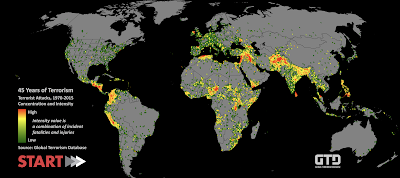
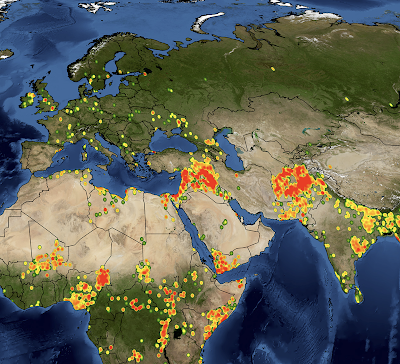
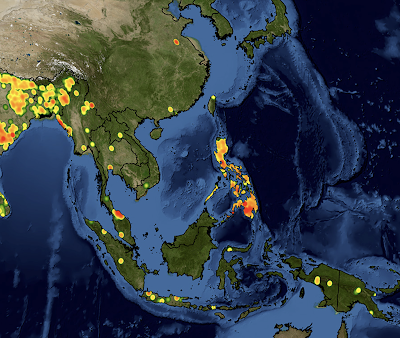
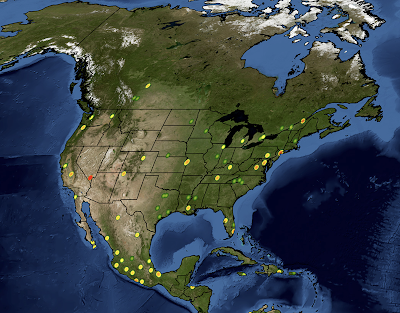
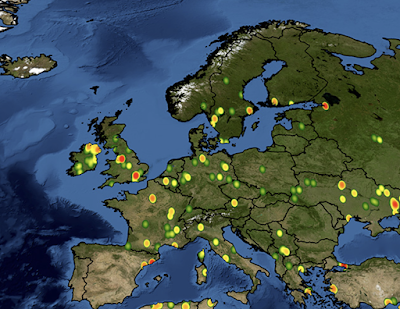
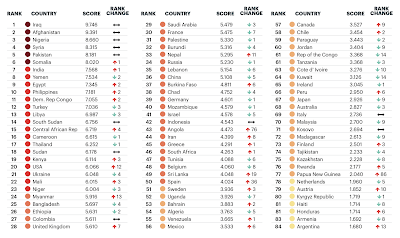
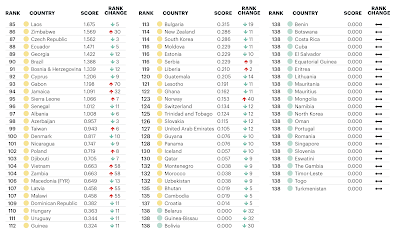
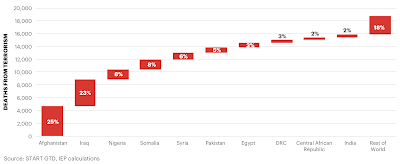
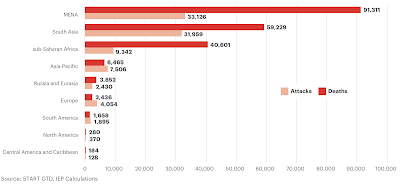
Be the first to comment